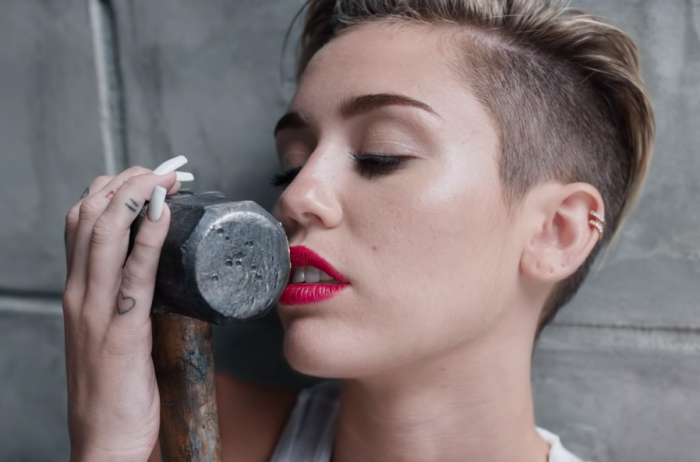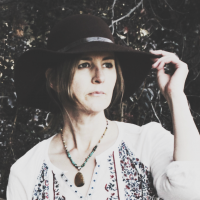You know by now that I hate labels—especially related to sexuality.
But I wanted to explore the concept of pansexuality after writing in several articles how much I feel turned on by nature.
What does this label actually mean?
Let’s start with the official definition. The first Merriam-Webster Dictionary definition of pansexual is: “of, relating to, or characterized by sexual desire or attraction that is not limited to people of a particular gender identity or sexual orientation. The prefix ‘pan’ means ‘all.'”
Of course, this sounds vaguely like the definition of bisexual: of, relating to, or characterized by sexual or romantic attraction to both men and women. Here, the prefix “bi,” which of course means “two,” is much more limiting than “pan.”
So what’s the difference? Many say that bisexuality is defined by a person’s attraction to both cisgender men and cisgender women. The gender binary, in other words, applies. Whereas those who identify as pansexual are attracted to anyone along the gender spectrum—whether or not they are cis, whether or not they identify as a binary gender, etc.
And yet, apparently, even this is up for debate. Last year, journalist Zachary Zane wrote about the blurred lines between bisexuality and pansexuality in an article for Rolling Stone:
“When the word ‘bisexual’ became popularized, starting with David Bowie when he claimed bisexuality in a Playboy interview in 1976, we didn’t have a nuanced understanding of gender like we do today. Now that we do have a better understanding, some bisexual people have updated the definition of bisexual to be inclusive of all genders, whereas others have favored abandoning it, for a new word, that frankly is less confusing, given that pan does indeed mean ‘all.'”
Perhaps we’ve ended up right back where we started, having no real understanding of what pansexual means. Honestly, these definitions mean little to me and I couldn’t care less about the debate over the nuances that separate bi and pan.
To me, the story is much bigger…
I have always felt that the natural world displayed blatant eroticism. Even as a child, I can remember watching bees rub themselves against a flower’s anthers and feeling the hairs on my arms stand on end. When my family went up to Big Bear for a weekend, I’d stand at the top of a rock, looking over the valley below, feeling the wind caress me, smelling the pine trees, and it made my body feel electric. I even loved straddling rocks and logs and exploring the sensations of those textures between my legs and against my crotch.
In short, the world around me seemed filled with sensual pleasures waiting to be explored—and I loved the exploration.
This wasn’t a big deal to me. I felt no need to talk about it with others and felt little shame about it, except when my mother caught me masturbating in the spa or behind the grove of trees in our backyard, which, admittedly, happened a lot. I got so damn turned on when I tipped my head back and watched tree branches sway in the wind.
I didn’t understand much about sex back then and therefore, didn’t really understand what I was experiencing. I just knew what sights, scents, and physical sensations made my body fill with energy or gave me a thrilling zip that went all the way down between my legs.
As a teenager, I noticed that some people understood this attraction I had to the world of plants, animals, wind, and rain. Emily Dickinson got it, as is plain to see in “Come Slowly—Eden!”
“Come slowly—Eden
Lips unused to Thee—
Bashful—sip thy Jessamines
As the fainting Bee—
Reaching late his flower,
Round her chamber hums—
Counts his nectars—
Enters—and is lost in Balms.”
(Yes, please…come slowly. Mmmm.)
Of course, we can’t discuss nature and sexuality without mentioning Walt Whitman and his seminal work, Leaves of Grass. As James E. Miller, Jr. wrote in Walt Whitman: An Encyclopedia:
“There remains the fact that innumerable ‘heterosexual’ readers, both men and women, have felt the power, sexual and other, of Whitman’s Leaves. His appeal is universal, not exclusive. Sexual labels are simplistic, distorting as they do the complexity of any ‘real’ individual’s sexuality. In short, all readers can share, consciously and/or unconsciously, Whitman’s omnisexual vision — omnisexual in the all-encompassing sense of embracing auto-, homo-, and hetero-erotic impulses. Individuals possess these impulses within them by the fact of being human and sexual, assimilated in passing through the stages of growing up. There is much more in their sexuality that brings human beings together than divides them, whatever the nature of their ‘sexual preference,’ whatever the nature of their sexual experience…”
Finally, I began to have a better understanding that I was not alone in my feelings about the eroticism of the natural world. But it wasn’t until I was in my 20s and read Alice Walker’s Possessing the Secret of Joy that I truly began to understand my own sexuality.
Let me be clear that this book is of vast cultural importance for a reason that has nothing to do with a privileged white woman’s exploration of her sexuality. It’s about female genital mutilation, the repression of female sexual pleasure, and the sexual agency that is routinely stolen from women of color—and this book should be read by everyone. It just also happened to give me the language with which to know myself better, as a sexual being. While I am grateful for that fact, I don’t want to undermine the importance of its core message.
So keeping that in mind, all I will say here is that one of the characters identifies as pansexual—a term I had never heard at the time. This character discovered orgasmic experiences in nature that were very familiar to me. Here’s what Walker had to say about it:
I was writing in Possessing the Secret of Joy about a pansexual person, someone who is turned on by waterfalls, and elephant rides, and horseback riding, and all of that…there are women who are orgasmic riding horses and elephants and waterfalls.
Yes! Waterfalls! Rivers, rapids, lakes, creeks, the ocean… A bumpy ride on a horse’s back. Talk about turn-ons.
The more I dove into Walker’s work, the more I came to understand the limitlessness of my sexuality. And I was convinced that far more people understood this than were willing to admit.
Why do you think so many movies have lovers meet or reunite when it’s windy or rainy? Because we all inherently understand the sensuality of water dripping onto us, running down our limbs, or the persuasive and sometimes insistent caress of a breeze. And yes, okay, because it increases the drama of the moment—but my point still stands.
Why do people fantasize about sex on the beach, or out beneath the stars, or in a warm, island lagoon? Because our bodies recognize the eroticism of the natural world and that understanding can make a sexual experience even more intense.
Today, more and more people are openly discussing pansexuality and even using this word to identify themselves. Miley Cyrus has, perhaps, become the most famous voice in this discussion. In 2014, she told Paper Magazine:
“I am literally open to every single thing that is consenting and doesn’t involve an animal and everyone is of age. Everything that’s legal, I’m down with.”
But for me, an important distinction of pansexuality is that it is not limited to human objects of attraction. I find being in the natural world to be an intensely sensual experience. It’s hard for me to say that because I know it comes off as provocative and glib. Kind of like, “Look at me, I’m so sexual and hot—I just want to f*ck everything.”
But that’s not what I mean. I don’t want to put a tree branch inside me and f*ck it. (Ouch.) I don’t have any desire to copulate with an animal (though I occasionally indulge in fantasies about Queen Pasiphaë being pleasured by Poseidon’s white bull). Taking a hike in the woods doesn’t, in itself, make me wet and horny.
It’s much more subtle than that.
I get a sexual thrill—a shivery, delicious, turned on feeling—from watching dandelion Pappas skitter across the sky in a gust of wind or from observing coyotes hunt for mice in a field. I feel breathless and filled with an expansiveness that goes beyond my body when I stumble upon an owl in the woods or sit at the top of a hill and look down at the world below me. And yes, I still love to straddle rocks and logs and lay my body over them to really feel their shape and energy (yes, I think they are alive). I don’t do this to get off. I just want to feel the connection between our “bodies” and to allow myself to be held by another being.
I find being in the natural world to be an intensely sensual experience.
Interestingly, there’s one more definition of pansexuality that feels more accurate to me: tending to suffuse all experience and conduct with erotic feeling. “All” might be a little much, though I realize that using the prefix pan means “all” is unavoidable. But that’s much closer to my definition of sexuality than just an attraction between human beings.
To me, the whole world is filled with erotic sights, sounds, tastes, sensations, and experiences. I see it and feel it every day. It’s not about humping trees or getting carnal with a wild canine. Pansexuality, in my opinion, is about enjoying the inherent sensuality of the world and letting that enhance one’s actual sexual experiences with other people.
Clearly, this world was created to turn us on. And I have always taken full advantage of that.
~
Author’s note: Admittedly, pansexuality ultimately fails as a label in the way I use it. When referring to an attraction to all humans, then the “pan” is appropriate. But I realize that using it to refer to humans and the natural world, yet not to animals, is inaccurate—“pan,” in that case, presumably would, indeed, include animals. I am aware of this flaw in my logic.
Further, I want to note that cross-species sexual fantasies and practices have been a part of the human experience, from zoophilia to bestiality. But, alas, we’ll have to wait to discuss that in a future article…












Read 0 comments and reply